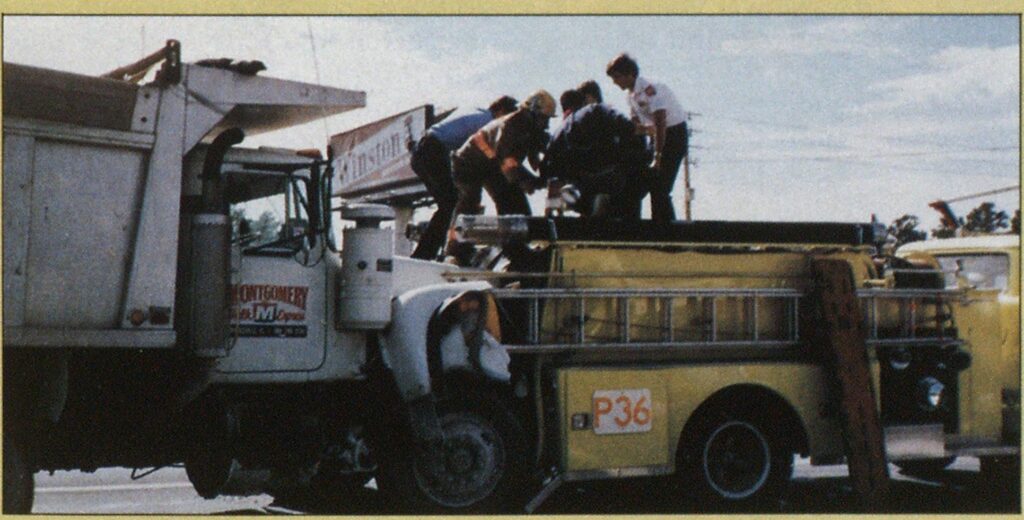
Defensive Riding
When two accidents less than a month apart threw a total of three Pinellas Park, Fla., firefighters from the tailboards of apparatus, no one was seriously injured—mostly just shaken up.
But it was enough to cause a shakeup for the sake of safety in the department’s standard operating procedures.
On January 10 of this year, an advanced life support engine was staged on a busy street at the scene of an accident. It was shortly before 10 at night, but the vehicle’s light color and flashing lights made it highly visible. In the process of picking up, the driver was on the back step securing a back board into its holder in the hose bed area. As he turned around, he spotted a van moving rapidly toward him. Realizing he was in danger, the apparatus driver jumped six feet through the air just before the van plowed into the rear of the engine.
Although this firefighter wasn’t riding on the back step — just working there while the engine was stationary — the accident pointed up the vulnerability of the tailboard position. The second accident reinforced the point.
This time a reserve pumper without jump seats was stopped at a red light at midday. Two firefighters were on the tailboard, strapped into harnesses that went around their waists and were secured to the back bar.
to Back
SAFETY

Defensive Riding
A fully loaded dump truck was bearing down on them. When the firefighters realized it wasn’t going to stop in time, they bailed off of the back of the pumper—just as the dump truck imbedded itself into the pumper’s back end. But they couldn’t get their life belts unlatched fast enough. One firefighter swung off the side, hanging in the air and struggling not to swing back to the rear. He later walked away from the accident.
(Photos by Louis R. Sclafani, Jr.)

The other firefighter went up onto the hose bed, trying to scramble away but still attached to the back bar. He had to be fully immobilized before being transported to the hospital, and he suffered general muscle spasms.
The next day, Pinellas Park Fire Chief Kenneth L. Cramer ordered that under no circumstances would anyone be allowed to ride tailboard again.
This is no hardship for the frontline apparatus, all of which have jumpseats. But the new safety measure requires an adjustment for the reserve apparatus, which up to that point had been the only place tailboard riding was allowed. The old policy required personnel riding on the back step of a reserve piece to wear the life belt and a helmet; full gear was required when responding to a call.
The tw’o accidents demonstrated those precautions weren’t good enough. The new standard operating procedure limits the number of people riding a piece of reserve apparatus to two, and both have to be in the cab. Other personnel must ride in another vehicle.
It’s a policy of defensive riding.

